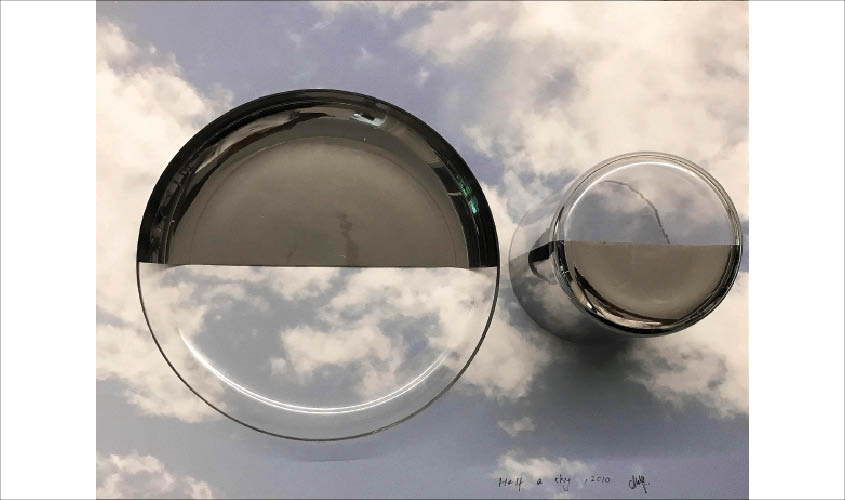Seven of Delhi’s top galleries, and some of India’s best contemporary artists are participating in the 2018 edition of the Delhi Contemporary Art Week. Bhumika Popli writes about what to expect from the season’s biggest group show.
After a few dormant summer months, the galleries in Delhi are back in action. A series of diverse and thought-provoking exhibitions are lined up for the next few weeks across the city, but the focus is on the big group show, entitled the Delhi Contemporary Art Week (DCAW), which opens on 27 August.
Now in its second edition, the DCAW will feature artworks from seven top-notch galleries from the city: Blueprint 12, Espace, Exhibit 320, Latitude 28, Nature Morte, Shrine Empire and Vadehra.
The four-day event will be hosted at Delhi’s India Habitat Centre, with prominent artists of the calibre of Shilpa Gupta, Anju Dodiya, Zarina Hashmi and Ravi Agarwal among the participants.
Roshni Vadehra, director, Vadehra Art Gallery, spoke to Guardian 20 about the focus of this year’s show. “Here our idea is to expand the audience for Indian art while promoting contemporary art in particular. The show also aims to attract both young and old collectors who resonate more with contemporary artists.”
With frequent exhibitions happening in the city every year, things have become easier for passionate art collectors as they now have access to a good deal of artworks right here, and don’t have to rely anymore on foreign galleries and auctioneers.

A seasoned collector, Tarana Sawhney has been investing in art since the last 18 years. According to her, displaying the finest pieces of contemporary arts under one roof is a great idea. She says, “Unlike other cities, where art galleries are usually situated at a specifically designated area, the situation in Delhi is very different. Here, the galleries are spread out far from each other. This show will bring a range of exhibits together, which I think is a wonderful initiative.”
Sawhney also has a few suggestions for young collectors planning to visit the exhibition. She said, “Love what you buy as you will be living with the artwork every day, inquire about the artist you like from the gallerist, and don’t forget to do your own research about your preferred artwork on the internet.”
Visitors will find artworks in a number of distinct mediums at the DCAW. The paintings, sculptures, photography and mixed-media works—included in the exhibition—are based on varied themes, such as the economy, ecology, landscape and identity politics of our times, among other subjects.
Delhi-based artist Ravi Agarwal, known for addressing the gap between art and activism, will be displaying two photographic works from his series, Else All Will Be Still. This particular series by him acquaints viewers with the problems faced by fishermen living near the Bay of Bengal coast of Tamil Nadu, close to Pondicherry. He says, “Through my work, I have tried to examine the negative effects on the lives of poor fishermen when the coast changes its shape owing to shrinkage of beaches, construction of new harbours, and the presence of trawlers which snatches away the livelihood of fisherfolk.”

Another artist, Shilpa Gupta adds a new narrative to the concept of identity. Titled Half A Sky, her installation emerges from an art and design experiment she was was invited to do in 2010 in Austria. According to Gupta, “I developed objects which are half transparent and half mirrored. These objects, placed on the photograph of the sky as its background, invite viewers to see themselves either completely or in half.”
Niyeti Chadha’s works are also part of the DCAW 2018. The artist maps the changing urban landscape. In the show, she will be displaying two artworks, including a sculpture and a drawing.
Then there is Prajjwal Choudhury’s digital print from his series, To Be Continued. The artist is fascinated with matchboxes, which he has been collecting since childhood. According to him, the illustrations on matchboxes “encapsulate the heterogeneous and hybrid visual culture of modern India quite perfectly.”
The DCAW also has a section devoted to South Asian artists. Mandira Lamba, director, Blueprint 12, told Guardian 20 about this special part of the show. She said, “As a gallery, our focus has been on the practice of South Asian artists. This is the vision that we propose to present at the contemporary week as well. We represent artists from Nepal, Bangladesh and Sri Lanka, besides two of our Indian artists in the show.”
DCAW will be on view at Delhi’s India Habitat Centre from 27-30 August

